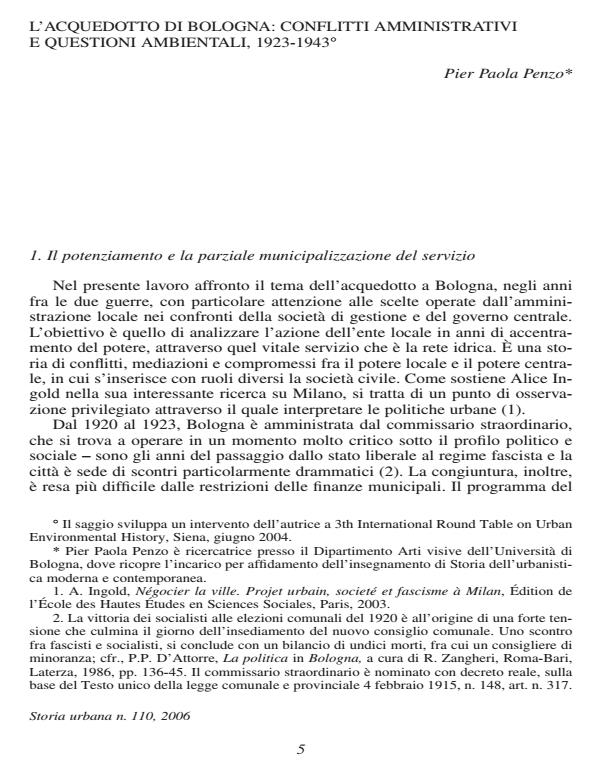L'acquedotto di Bologna. Conflitti amministrativi e questioni ambientali, 1923-1943
Journal title STORIA URBANA
Author/s Pier Paola Penzo
Publishing Year 2006 Issue 2006/110 Language Italian
Pages 20 P. File size 1385 KB
DOI
DOI is like a bar code for intellectual property: to have more infomation
click here
Below, you can see the article first page
If you want to buy this article in PDF format, you can do it, following the instructions to buy download credits

FrancoAngeli is member of Publishers International Linking Association, Inc (PILA), a not-for-profit association which run the CrossRef service enabling links to and from online scholarly content.
The strong centralism which characterized the Fascist period didn’’t prevent conflicts between the local administrative bodies and the central public authority from occurring. In Bologna the dispute concerned waterworks in particular. In certain situations it was possible to reach a compromise. However, when local interests were affected by the big new works of the regime, conflict became unavoidable. The construction of the railway line Direttissima between Bologna and Florence damaged waterworks sources, reducing water supply. In spite of this, the government believed these works to be essential as propaganda and decided to complete them. Therefore the city, which was ruled by a podestà appointed by the government, had to accept this situation. Yet it did express its dissent by refusing to agree to the mediation proposal put forward by the government. Without putting up an open opposition, which would not have been permitted, a form of passive resistance was shown. Passive, nonetheless tenacious.
Pier Paola Penzo, L'acquedotto di Bologna. Conflitti amministrativi e questioni ambientali, 1923-1943 in "STORIA URBANA " 110/2006, pp , DOI: